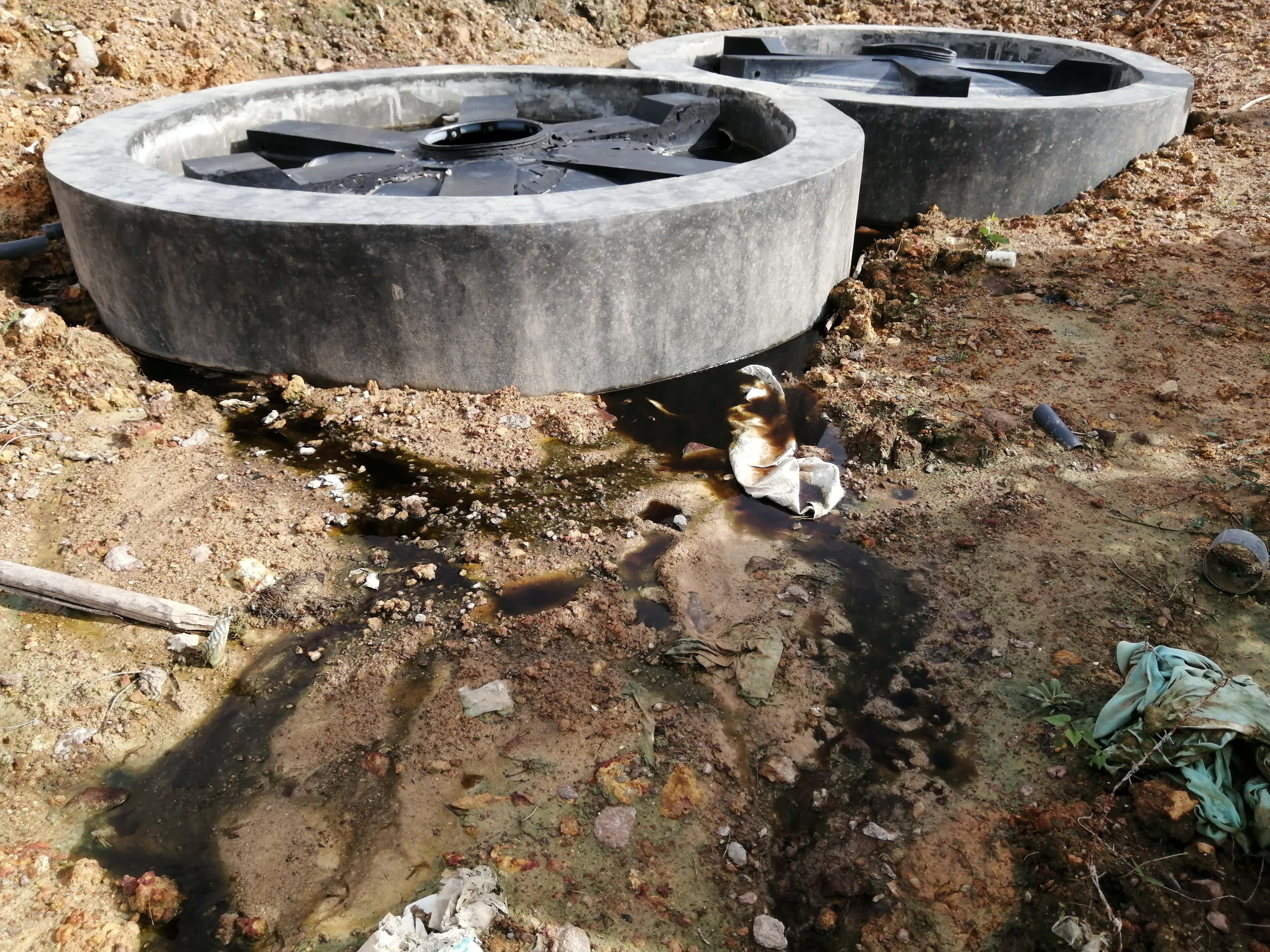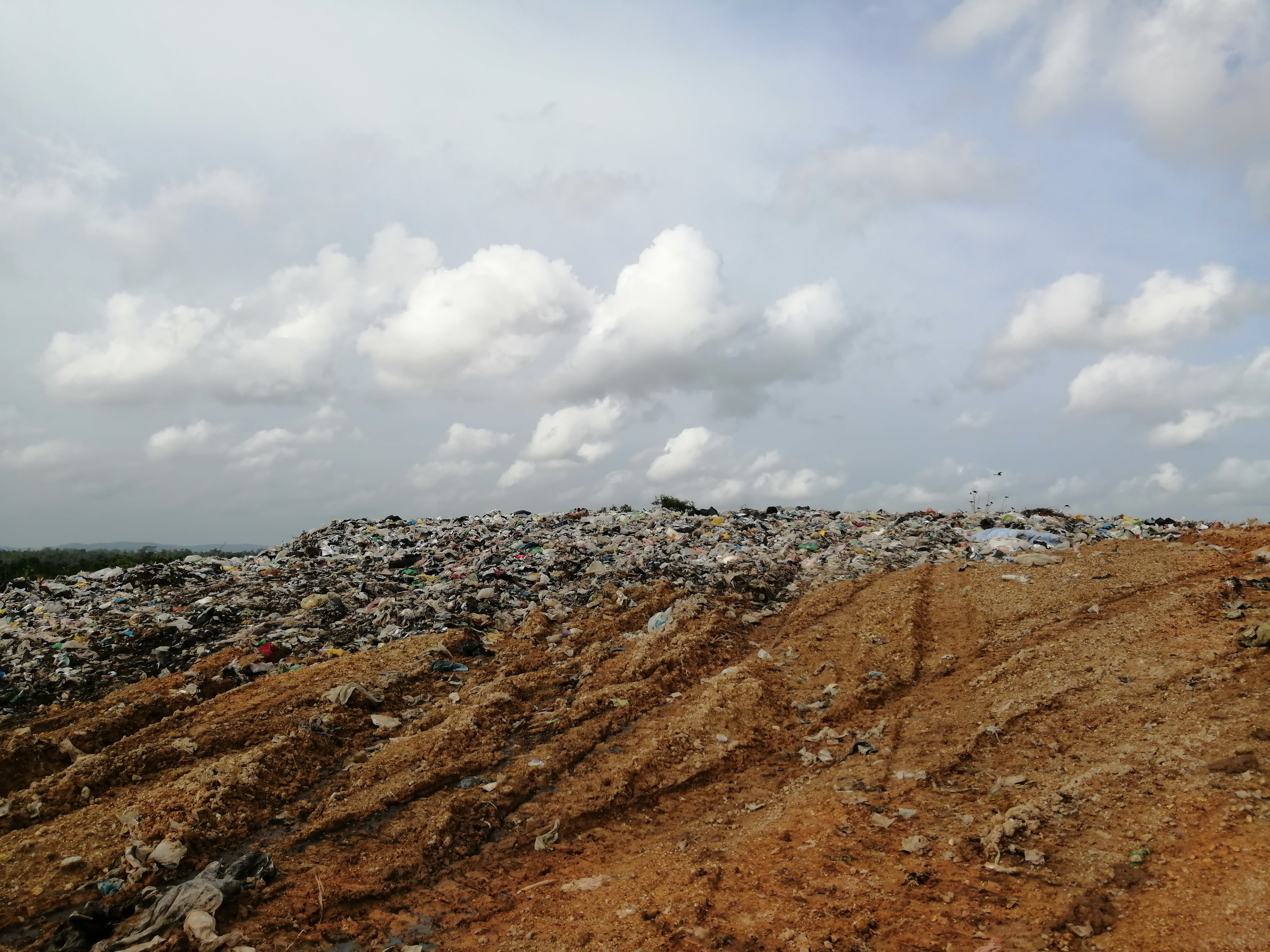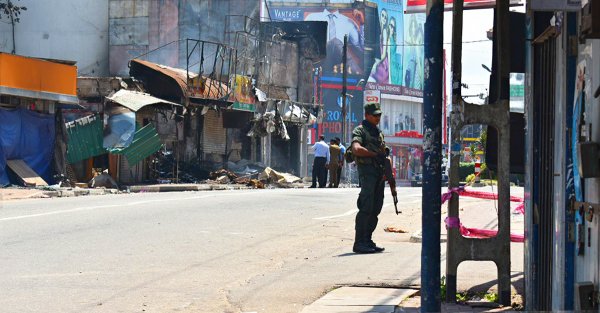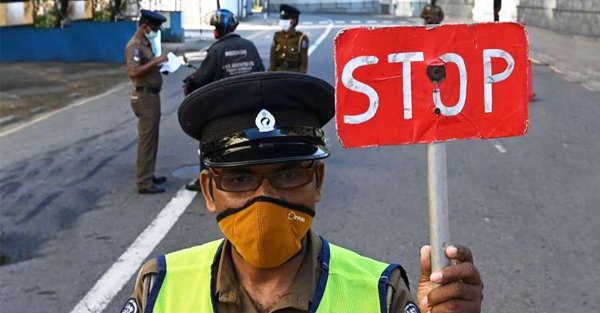
Winding roads and lush green paddy fields lead to the small coastal town of Rathgama in the Galle district of the Southern province, where somewhere a little past the town’s junction is the area known as ‘Monroviawatte’.
Rathgama is beautiful—deep waters and greenery giving way to sandy shores and tossing waves. But the closer to Monroviawatte you get, the more pungent the smell of rotting garbage.

It is the strangest juxtaposition: flourishing paddy fields set against the backdrop of a mountain of garbage. But, Monroviawatte is where authorities have chosen to set up what is officially known as a compost plant complex and sanitary landfill—although residents simply refer to it as the ‘garbage dump’.
Waste Water
For over six months now Indrapala* (66) has been struggling to walk. There are painful boils and bumps on his feet on which are a few plasters granting temporary relief.
Having been a farmer his entire life, he believes that the wounds are the result of contamination in the water flowing into the paddy fields. “The paddy fields are not in a proper state,” he said. “And I cannot get into the fields [to work].”
Indrapala also recently lost his wife due to an unexpected infection in her kidney and believes her sudden death was a result of contamination in the water.
As we walk around, we notice that the water bodies surrounding the Compost Plant Complex have indeed turned green. Trees closer to the complex have stopped bearing fruit and flowers, and the villagers tell us that just a few months ago, the fish at a nearby water body had died.

Getting Rid Of Garbage
The Monroviawatte Compost Plant Complex opened in 2012 on 20 acres leased from the government and collects waste from seven local authorities; Rathgama, Hikkaduwa, Balapitiya, Galle, Ambalangoda (both its Pradeshiya Sabha and Urban Council) and Bope-Poddala.
It was part of the ‘Pilisaru National Solid Waste Management Project’ that was launched in 2009, to implement a sustainable and environment-friendly waste management system. Building compost facilities and sanitary landfills were part of the programme.
Central Environmental Authority (CEA) Planning and Implementation Manager at the time, Malaka Dassanayake explained that with sanitary landfills land is dug up to form a vast pit, over which a protective covering is placed to prevent contact between the garbage and the ground.
As per the due process, waste that is brought in is separated—and degradable material sent to the Compost Plant Complex, while non-degradable waste is deposited into the landfill, which is packed over with earth to keep it compact.
This creates alternate layers of earth and waste. The final layer is a plastic lining on top of which is dense soil, re-creating the original land area. “This can be used for recreational activities or parks and this method has been adopted in several other countries,” Dassanayake explained.

Sandamalie* (35), who lives close to the Monroviawatte Compost Plant Complex told Roar Media the stench from the garbage is strongest in the early hours of the morning and when it rains. “[Then] the smell is so unbearable, it makes me want to cry just trying to endure it,” she said.
The exposed garbage has also brought an influx of flies, forcing those living nearby to even eat under nets. “What are mosquitos, when we have flies even at midnight,” Sandamalie complained. Her family was even forced to close up one of their wells due to contamination of the water.
Neither Sandamalie, nor any of the other families living nearby are opposed in principle to a sanitary landfill near their homes. They do object however, to the careless manner in which the Compost Plant Complex and landfill are being operated, affecting the lives of all those around it.

Mismanagement
Dassanayake, who was a part of the project at the inception, but is no longer with the CEA, working as a freelance environmental consultant instead, explained that a vital part of project was treatment—every time waste is brought to the landfill, liquid and gaseous emissions must be collected and treated before being sent back.
But the lack of adequate liquid and gas treatment is clear at the site, with contaminated liquid evident on the ground and in waterways. The sanitary landfill is also above ground level, and the garbage now being dumped in the open, is mounting.
It is also clear the landfill has exceeded capacity, and instead of being disposed in the intended manner through sorting and layering, waste is piling up like any other dump.
Garbage transportation is an additional issue, residents tell us. Some garbage lorries are not sealed, others are only covered with large tarp, and a fair amount of garbage is dropped along the way, the foul smell adds to the existing stench in the otherwise sanguine and secluded area.
But, protests and appeals to authorities, even as far back as in 2015, have not led to any intervention or sustainable solution. And even though an article was published earlier this year claiming the issues relating to the plant had been resolved—there is no proof of any change.
The garbage dump grows in height and unbearable conditions for those living nearby continue.
*Names have been changed to protect identity.







